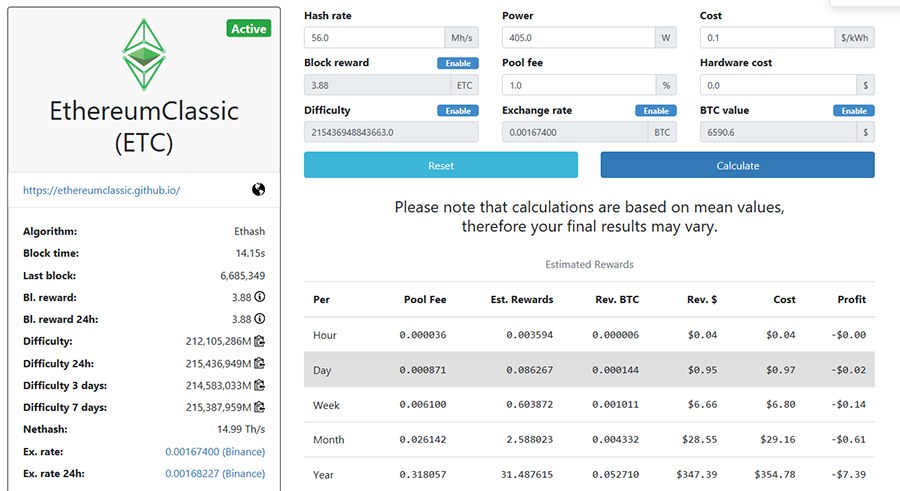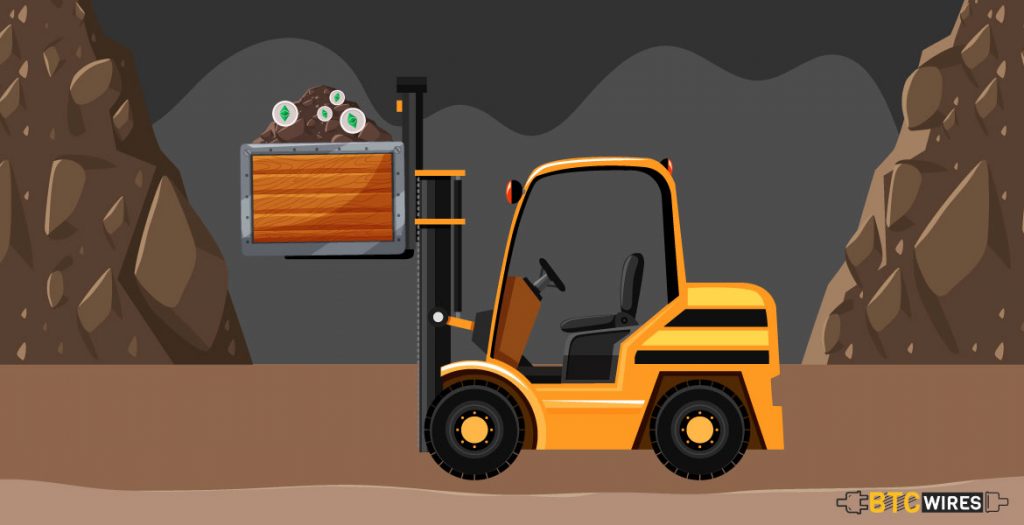Dec 17, 2018 18:30 UTC
| Updated:
Dec 19, 2018 at 12:31 UTC
Ethereum Classic Mining
Ethereum Classic (ETC) is the original Ethereum blockchain combined with a hard-fork gone wrong.
The issue dates back to June 2015 when the Ethereum community decided to implement a fork on the existing network.
However, things went haywire when one of the protocols for avoiding the double spending, DAO was exploited by a hacker and ETH worth millions were taken away from the network.Many developers disapproved of the Fork and kept working on the existing Ethereum blockchain network now known as Ethereum Classic.
Ethereum Classic is considered to be one of the more easier digital tokens to mine.
In this article, we will extensively cover the mining part, where you can learn how to mine the Ethereum classic, the hardware mining machines required and software configuration to get the best returns.
So let us dive deep and see what it takes to become an Ethereum Classic miner.
You May Also Read: Ethereum Mining Explained
Is Ethereum Classic Mineable?
The short answer is Yes and easier to mine when compared to the original Ethereum as the hash power requirements are comparatively lower.
Now talking about the technical aspect, the Ethereum blockchain make use of Proof of Work (PoW), to verify its transaction, and thus mining becomes an essential part for transaction validity.

Since the level of difficulty in mining is comparatively lower, people with GPU rigs can also make a profit out of mining Ethereum Classic.
If we talk about mining profitability i.e., the energy consumption of the mining rigs and the initial cost of setup in comparison to the value of digital token mined, it is a win-win situation.
The image above from whattomine gives a distinct clarity over the topic in discussion. We can clearly see that the hash power required for mining ETC is half that of the Ethereum.
You May Also Read: What Is Cryptocurrency Mining?
Setup of a Mining Rig

In a peer-to-peer network where there is no centralized authority checking the validity of a transaction, mining plays a very important part.
Mining is basically stamping a transaction with authenticity.
Now mining is not a usual checking process either, it is a complex mathematical equation working on a particular algorithm, Etash mining algorithm in case of ETC.
To solve these complex mathematical equations, you need specific hardware and a set of software and a wallet capable of holding your digital asset.
Let us look at the specifics and requirements:
- To start with, you will need a wallet that supports ETC holdings, so make sure you do not confuse between Ethereum Classic (ETH) and Ethereum (ETH).
- Once you are decided upon the wallet, the next decision is which hardware to use. Currently, Nvidia graphics cards such as the 1080 and 1080i are in great demand and they do the job. Apart from the GPU requirements, you will also need at least 4GB of RAM, be it system integrated RAM or a separate video dedicated one.
- The next important choice comes for software selection, Claymore Dual Ethereum miner is currently one of the top choices for both the Nvidia hardware users as well as the AMD GPU users. The software also supports two OS windows and Linux. Apart from Claymore Dual Ethereum, people also make use of Ethminer which again is supported by both Nvidia and AMD GPUs.
- Once you have decided upon your hardware and software, and want to scale the mining level, then you can attach a maximum of 6 GPUs to your mining rig for better and faster operations.
You May Also Read: Bitcoin Mining Pool Explained
Going Solo vs Pool Mining

Once your mining rig is complete with the necessary hardware and software installation you are set to start mining your Ethereum classic.
However, there is one final decision to make, whether you want to go for solo mining or join a pool of miners.
The pool mining charges 1% on your earned digital token, but the upside is you can combine or share the hash power with other people from the pool, so the cost of energy consumption comes down significantly.
Let us take Nanopool as an example to understand how pool mining works and people can make use of it to generate maximum profit.
Nanopool has made it a ‘walk in the park’ to join a mining pool and start the operations. All you need to do is go to the main website and click on their quick start app. The app will breeze you through the initial setup process and quickly set up the software as per your requirements.
You need to make a few selections with the quick setup app, first select your choice of GPU between AMD and Nvidia. Depending on your choice you will be redirected to the respective software configuration website. You need to download the Zip file and extract on your computer and install the software. The software will run several parameter checks to see if your system is compatible with the software and if everything is fine the setup will start to begin shares.
You May Also Read: 5 Best Bitcoin Mining Hardware
Final Thoughts
Ethereum Classic is the perfect choice for new miners as well as those who are looking to make a great profit. The difficulty level of mining is fairly low when compared to any other mainstream token and the hash power is half to that of ETH. if you are using pool mining the combined hash power makes the cost of power consumption significantly low. The initial setup is very easy and one can set up the whole rig within 20 minutes by following the right instructions even if someone is doing it for the first time.
Looking at the current cost of Ethereum Classic, a good gaming computer can turn into a profitable mining rig with a right set of software. So yes it is quite easy to set up and mine Ethereum Classic.
Here are a Few Articles for you to Read Next:
- How To Buy Bitcoin Using Your Bank Account?
- 10 Reasons To Buy Bitcoins In 2018
- How To Sell Bitcoin Gold?


























































